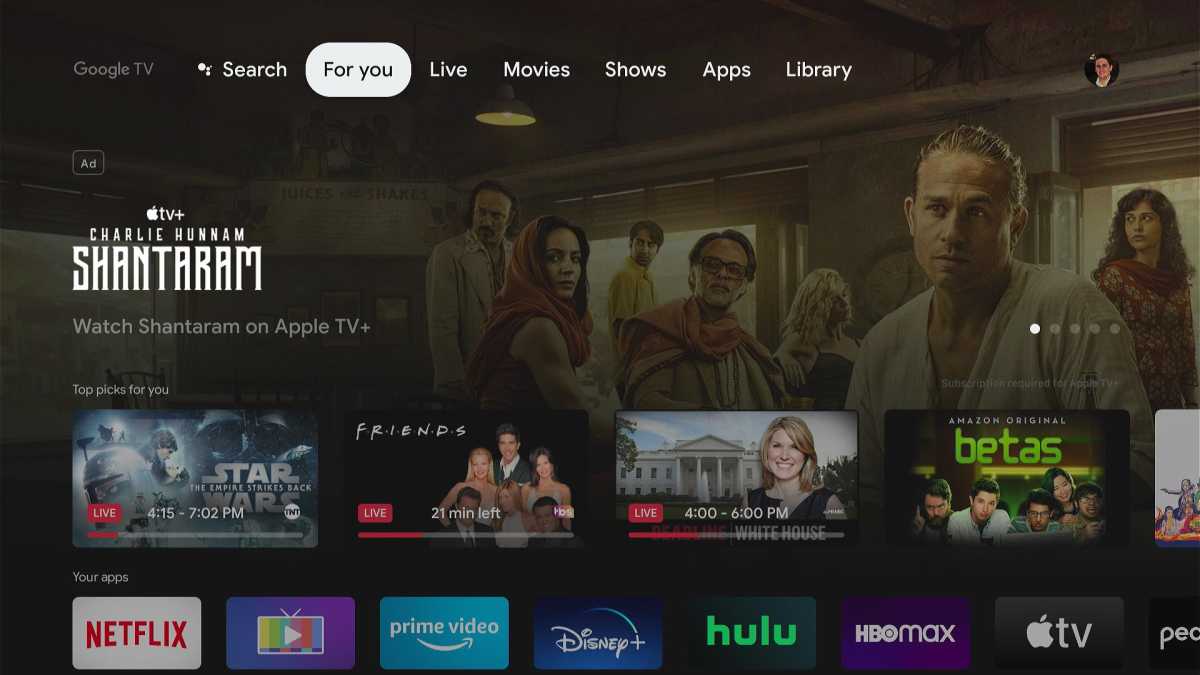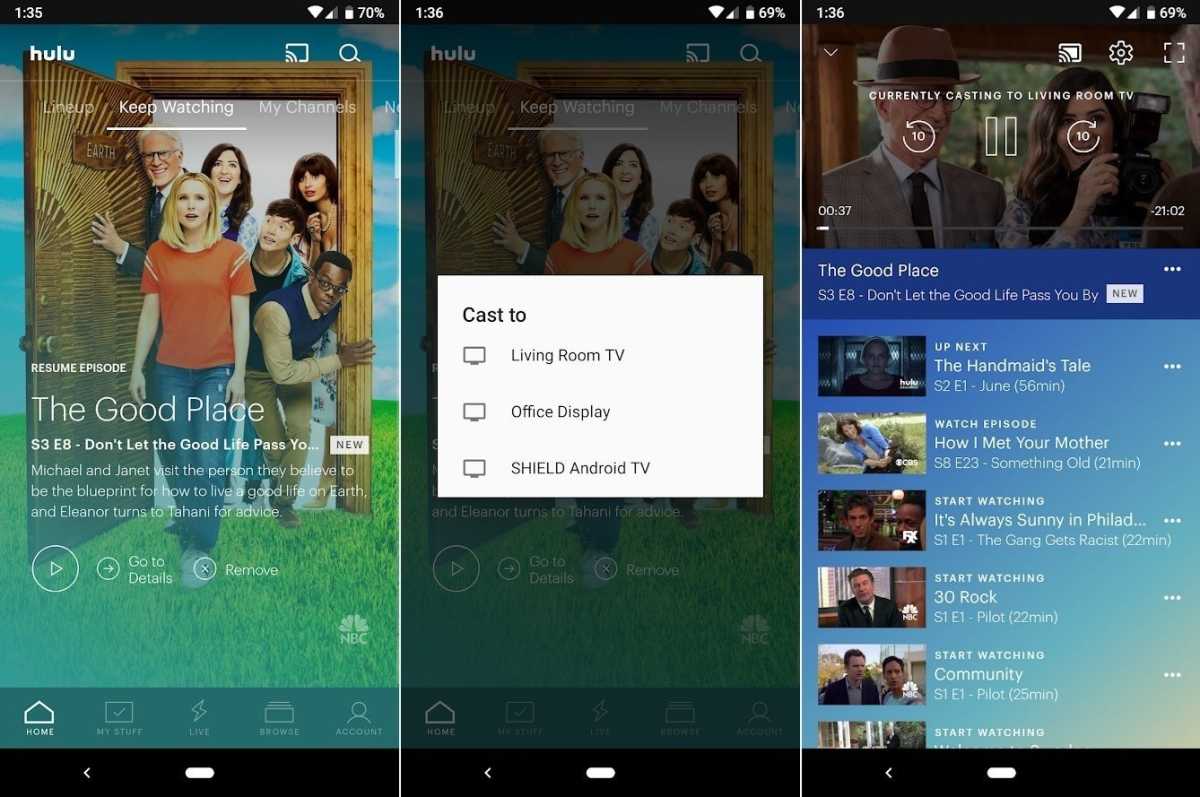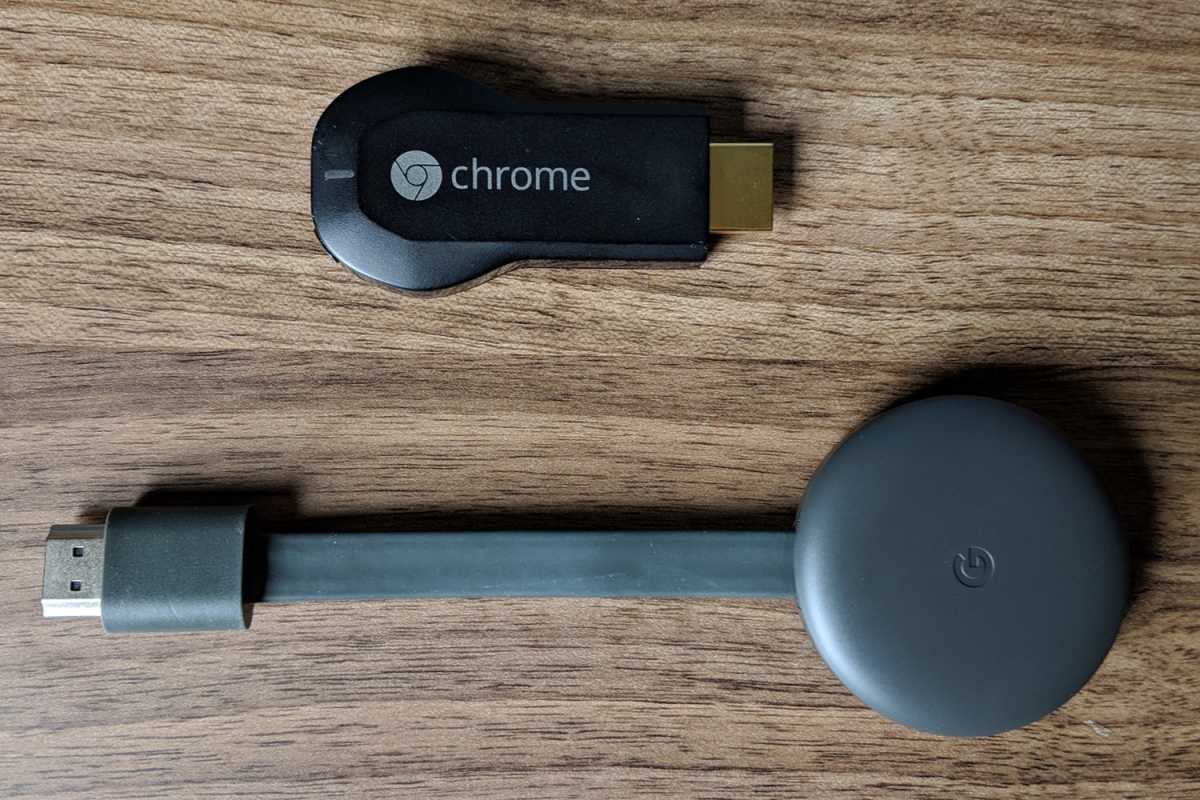I got a lot of dismayed emails last week after Google announced that it’s discontinuing its line of Chromecast streaming dongles.
Will existing Chromecast devices stop working? Will anything replace them? Are there better phone-as-remote solutions or ways to mirror your phone or laptop on the TV that are worth considering instead?
The short answer to those questions is that you needn’t worry too much. If you’re still using a Chromecast device now, it should continue to function as normal, and there are plenty of options to replace your Chromecast in the future if necessary. But unless you’ve paid close attention to Google’s assorted branding foibles over the last decade, the details can be tricky to understand. So let’s break it down.
This story is part of TechHive’s coverage of the best media streamers.
Chromecast vs. Chromecast vs. Chromecast
Much of the confusion stems from how the word “Chromecast” can refer to a few different things:
- The original Chromecast dongles: Google released these between 2013 to 2018, including the thumb-shaped first-gen model and its circular successors. They rely exclusively on your phone, tablet, or computer as the remote control, with no TV-based menus to navigate.
- Chromecast with Google TV: These include the 4K model that launched in 2020 and the HD model from 2022. Both are based on Google’s Android TV operating system, with actual remote controls and downloadable TV apps. (The name “Google TV” refers to Google’s menu system that helps you figure out what to watch.)
- Chromecast Built-In: This feature for smart TVs and streaming players lets them receive content from your phone, tablet, or laptop, just like the original Chromecasts. It comes standard on all Android TV and Google TV devices—including the Chromecast with Google TV dongles mentioned above—and also appears on Vizio SmartCast TVs and 2024 LG TVs.

Unlike the original models, the Chromecast with Google TV has a proper remote and big-screen menu system.
Jared Newman / Foundry
Google stopped selling the original Chromecast dongles years ago, so last week’s announcement was just about the newer Chromecast with Google TV devices: You can still buy the old devices for now, but Google won’t make any more once inventory runs out.
As for Chromecast Built-In, Google is quietly rebranding that feature as “Google Cast,” but the functionality isn’t changing or going away. You can still tap the Cast button in apps like Netflix or YouTube on your phone, then choose a Cast-compatible device on which to play the video. You can also use Google Cast to mirror the entire screen of an Android phone or a computer running Google’s Chrome browser.

Google Cast works not just with Chromecast devices, but compatible streaming players and smart TVs.
Jared Newman / Foundry
Even after Google’s Chromecasts disappear from store shelves, you’ll have plenty of options for devices with Google Cast support. Walmart’s Onn devices with Google TV, for instance, start at $15 for the HD model (though I recommend the $20 4K version or the $50 “Pro” box). The $100 Google TV Streamer, also announced last week, will support Google Cast as well. That’s in addition to all the Android TV- and Google TV-based smart TVs from the likes of TCL, Hisense, and Sony.
All which means that you needn’t make a run on existing Chromecast hardware before it’s gone. Casting and screen mirroring aren’t going anywhere.
How long will current Chromecasts last?

The first-generation Chromecast from 2013 and third-generation model from 2018.
Jared Newman / Foundry
Google only guarantees five years of security updates for Chromecasts and other home tech. That window has already expired for the original line of Chromecasts, and it translates to just one more year of guaranteed support for the Chromecast with Google TV 4K.
But in a statement, Google spokesperson Danielle Thayer said the company has “generally supported our devices longer than the stated commitments.”
That claim holds up for much of the Chromecast line. The only Chromecast that Google doesn’t support anymore is the original thumb-shaped dongle from 2013. All the other models are still getting software updates as of August 2024.
And even though the first-gen Chromecast has reached end-of-life, it may still continue to function. Google merely warns that users “might notice a degradation in performance.”
In other words, no one’s flipping a kill switch on the Chromecast you already own. If it works, and you’re happy with it, feel free to keep using it.
Are there other options?
If you do decide to move onto new hardware, Chromecast and Google Cast aren’t the only options for second-screen control and screen mirroring to your TV.
The best alternative is Apple’s AirPlay, which lets you mirror the screen contents of any iPhone, iPad, or Mac. It’s compatible with Apple TV streaming boxes, Roku streamers, and a growing number of smart TVs. While Chromecast’s phone-as-remote capabilities are superior—for instance, you can launch a video from one app on the TV and still play video from another app on your phone—AirPlay’s screen mirroring experience is smoother in my experience.
Roku devices, Fire TVs, and some smart TVs also support a standard called Miracast, which allows for screen mirroring from some Android phones and Windows PCs. I’ve found this to be unreliable, though, especially compared to Chromecast and AirPlay, and would advise against seeking out Miracast dongles in particular.
Amazon, meanwhile, is spearheading an open alternative to Chromecast and AirPlay called Matter Casting. It has some smart ideas on how to make casting better, but it’s unclear how much traction it’ll get from device makers and streaming services.
Keep in mind also that streaming devices have come a long way since Chromecast first launched in 2013. Because it offloaded all the navigational duties to your phone, Chromecast was once an appealing alternative to underpowered Roku and Fire TV devices. The hardware was cheap at $35, but it avoided the unbearable sluggishness and storage constraints that were common in other budget streamers a decade ago.
These days, that same price range can get you a fast and fluid streaming device with a real remote, a big-screen menu system, and apps that run directly on your TV instead of on your phone. Google itself knows this, which is why it’s trying to wind down the Chromecast brand after having banked on it for so long.
Sign up for Jared’s Cord Cutter Weekly newsletter for more streaming insights.

